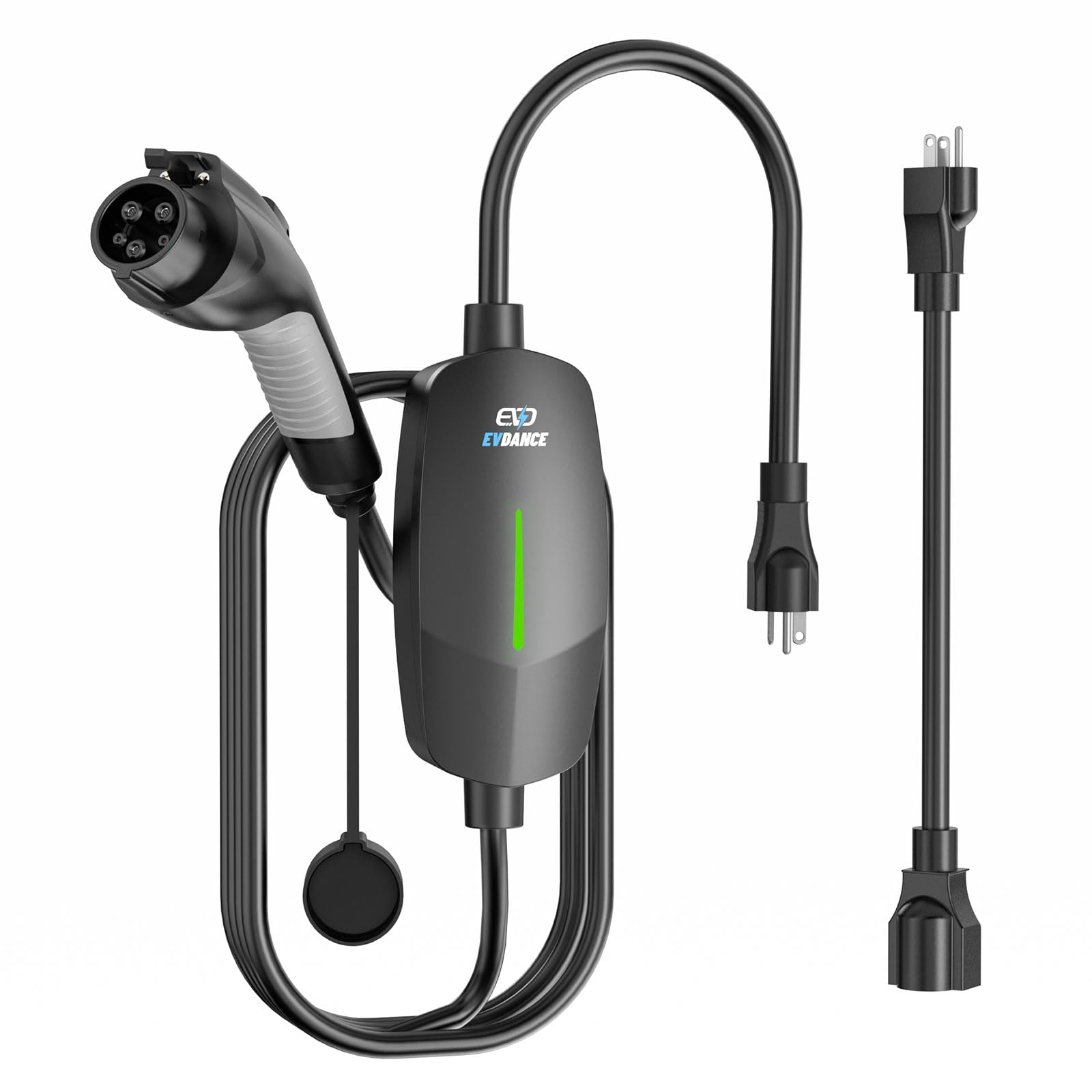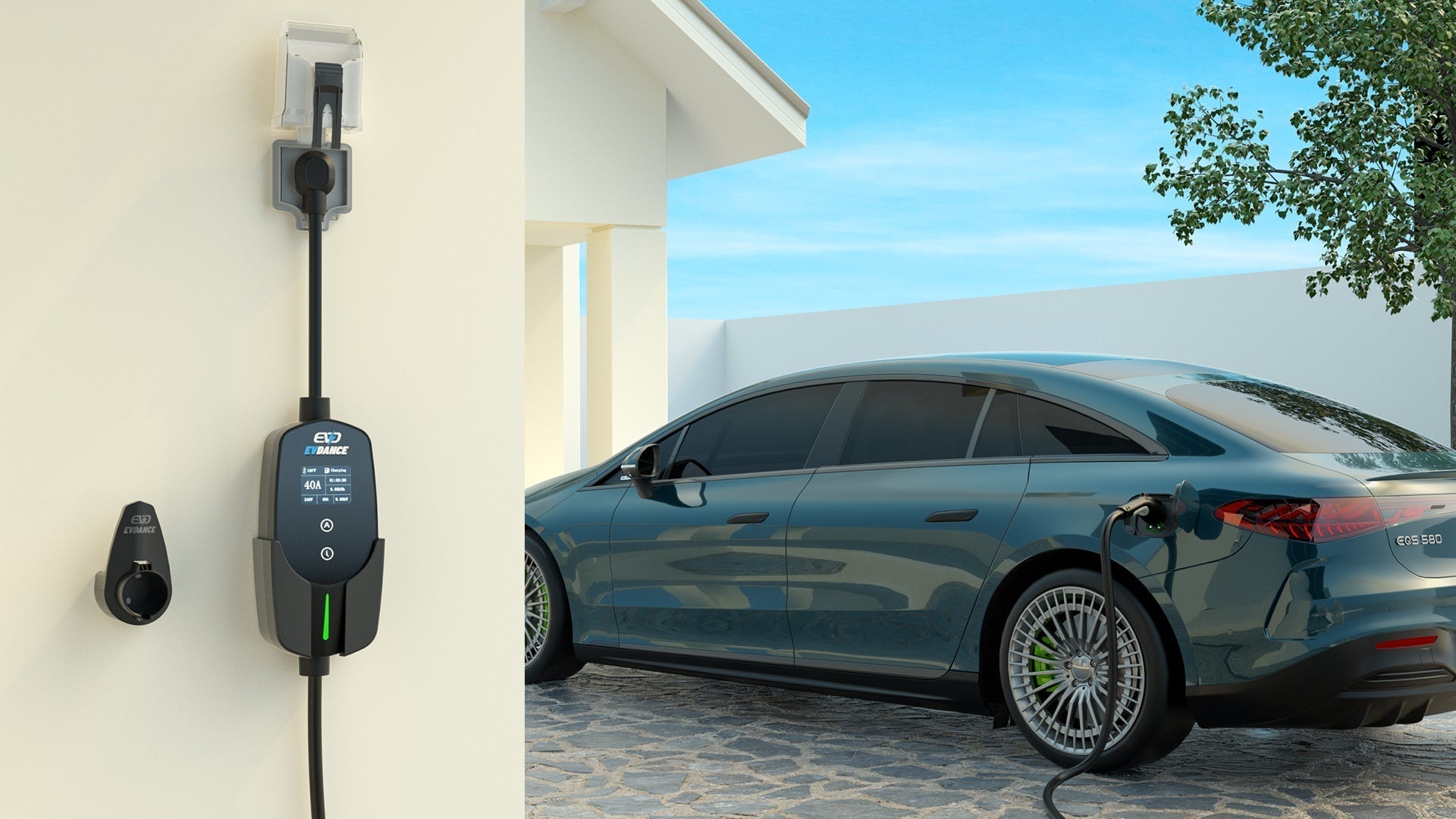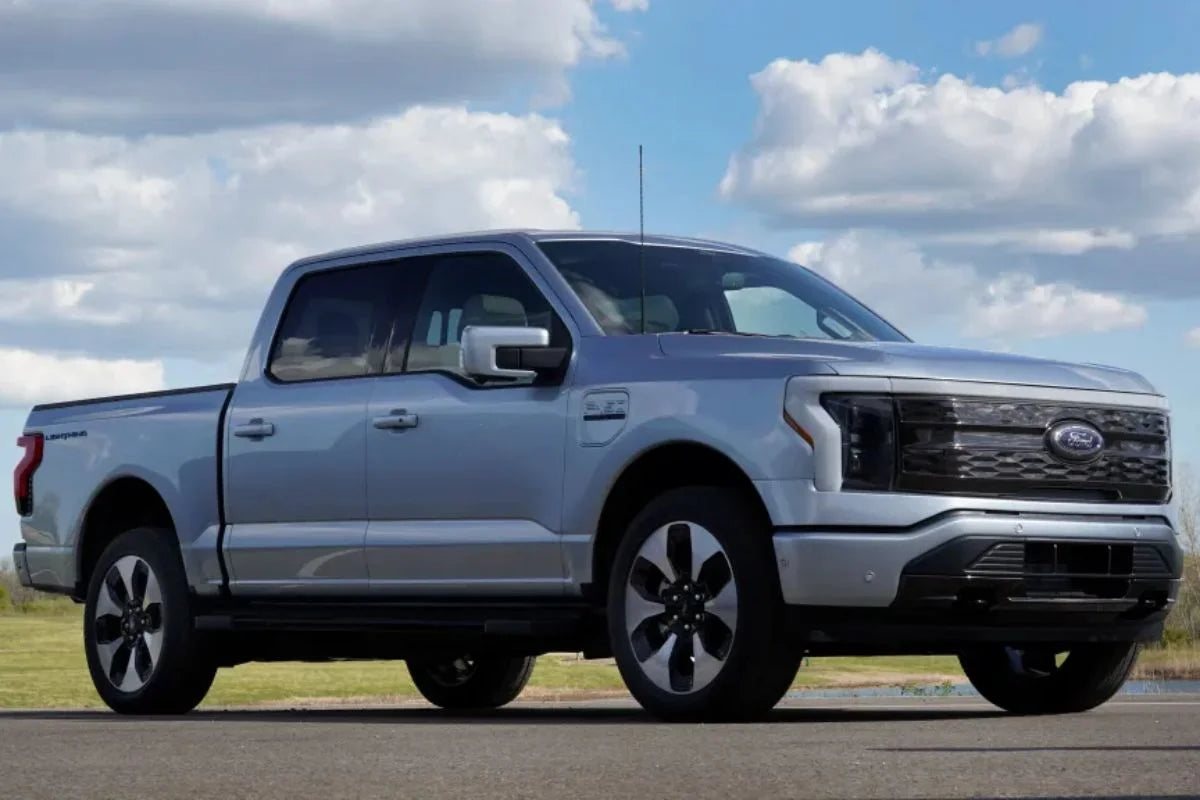Choosing the right charger for your car battery is crucial. For maintenance purposes, trickle ev chargers or solar chargers are ideal, as they provide a slow, consistent charge that helps preserve the battery's health over time. However, when it comes to fully charging a depleted battery, opting for a Level 2 charger and DC Fast Charger is recommended. These chargers, Level 2 EV Charger often fully automatic and available in varying amperage capacities like 12-50AMP, The DC Fast Charger can reach a maximum current of 800A, a voltage of 1000V and a charging power of 360 kW.deliver a robust and efficient charge, ensuring your battery reaches its full capacity effectively and safely. Selecting the appropriate charger based on your battery's needs can optimize its performance and lifespan.
I. Understanding Amperage in Car Battery Charging
A. Explanation of Amperage and Its Role in Charging
-
Definition of amperage as the measure of electric current flow:
Amperage, often referred to as amps, is a unit of measurement used to quantify the rate of electric current flow in a circuit. It represents the number of electrons passing through a point in the circuit per unit of time. In the context of charging a car battery, amperage refers to the amount of electric current supplied to the battery during the charging process. -
Importance of amperage in the charging process:
Amperage plays a crucial role in the charging process as it determines the rate at which the battery receives electric current. The charging amperage directly affects the speed at which the battery charges. Higher amperage results in faster charging, while lower amperage leads to slower charging. Therefore, understanding and selecting the appropriate amperage for charging a car battery is essential to optimize the charging process. -
How amperage is expressed in charger specifications:
Amperage is typically expressed in charger specifications as "A" or "amps." When purchasing a battery charger or using a charging device, you will often encounter terms such as "16A charger" or "40-amp charging capability." These specifications indicate the maximum amperage the charger can supply to the battery. It is important to choose a charger that can provide the required amperage for your specific battery to ensure efficient and safe charging.
B. Factors Influencing Amperage Selection in Car Battery Charging
-
Battery capacity:
The capacity of a car battery, usually measured in ampere-hours (Ah), indicates the amount of charge it can hold. The amperage for charging the battery should be selected based on its capacity. As a general guideline, a charging amperage of around 10-20% of the battery's capacity is often recommended. Voltage and current work in tandem to provide power (measured in kilowatts (kW)) to an electric vehicle's battery. For this reason, charging station specifications usually list the kW value, which indicates the charging rate of your vehicle.To convert ampere-hours (Ah) to kilowatt-hours (kWh), you need to consider the voltage of the battery or system. The formula to convert Ah to kWh is as follows:
kWh = Ah * V / 1000
-
Battery chemistry:
Different battery chemistries, such as lead-acid, lithium-ion, or nickel-metal hydride, have varying charging requirements. Each chemistry has specific voltage and amperage recommendations for optimal charging. It is crucial to consult the battery manufacturer's guidelines or specifications to determine the appropriate charging amperage for the specific battery chemistry. -
Charging time:
The desired charging time also influences the selection of amperage. If you require a quick charge, a higher amperage can be used, but it must be within the battery's recommended limits. However, if time is not a constraint, a lower amperage can be chosen for a slower, more controlled charging process. -
Charger capabilities:
The charging device or charger being used should have the capability to provide the selected amperage. Chargers have different amperage ratings, and it is essential to choose one that matches or exceeds the required charging amperage. Using a charger with insufficient amperage may result in prolonged charging times or inadequate charging, while using a charger with too high of an amperage can potentially damage the battery.
C. Importance of Proper Amperage Selection in Car Battery Charging
-
Battery performance and longevity:
Selecting the correct amperage for charging a car battery is crucial for maintaining its performance and extending its lifespan. Charging the battery with the recommended amperage ensures that it receives the appropriate current flow, preventing overcharging or undercharging, which can lead to premature battery failure. -
Battery safety:
Proper amperage selection contributes to the safe charging of car batteries. Charging with excessive amperage can generate excessive heat, potentially damaging the battery or even causing a fire hazard. On the other hand, charging with insufficient amperage may result in incomplete charging, leading to sulfation and decreased battery capacity. -
Efficiency and convenience:
Utilizing the optimal amperage allows for efficient and convenient charging. By selecting the appropriate amperage, you can minimize charging time while maintaining the battery's health. This is particularly important in situations where quick charging is required, such as when preparing for a long journey or addressing a low battery level.
D. 16 Amp vs. 40 Amp EV Charger
A 16 Amp EV charger and a 40 Amp EV charger are two different types of charging equipment used for electric vehicles (EVs). Here's a brief introduction to each charger:
-
- Charging Speed: A 16 Amp charger provides a relatively slower charging speed compared to higher amperage chargers.
- Compatibility: It is typically considered a Level 1 charger and can be used with a standard household electrical outlet.
- Charging Time: Due to the lower amperage, the charging time for an EV using a 16 Amp charger will be longer compared to higher amperage chargers.
- Usage: A 16 Amp charger is commonly used for overnight charging or in situations where a faster charging speed is not critical.
- Convenience: It can be easily plugged into a standard electrical outlet, making it suitable for EV owners who do not have access to dedicated charging infrastructure.

-
- Charging Speed: A 40 Amp charger provides a significantly faster charging speed compared to a 16 Amp charger.
- Compatibility: It is considered a Level 2 charger and requires a dedicated electrical circuit, typically installed by an electrician.
- Charging Time: With the higher amperage, the charging time for an EV using a 40 Amp charger will be shorter, allowing for quicker replenishment of the battery.
- Usage: A 40 Amp charger is commonly used in residential settings, commercial locations, or public charging stations where faster charging is desired.
- Convenience: It offers a higher charging capacity, making it suitable for EV owners who require faster charging times or have larger battery capacities.

It's important to select a charger that is compatible with your EV's charging capabilities and consider your charging needs and infrastructure availability when choosing between a 16 Amp and a 40 Amp EV charger.
understanding amperage and its role in car battery charging is essential for efficient and safe charging. Factors such as battery capacity, chemistry, desired charging time, and charger capabilities should be considered when selecting the appropriate amperage. By choosing the correct amperage, you can optimize the charging process, enhance battery performance and longevity, and ensure safe and reliable operation of your car's electrical system.
Factors Influencing Optimal Charging Amps
A. Battery Capacity and Size Affecting Ideal Charging Rates
Relation between battery size/capacity and optimal charging amps:
The size or capacity of a battery directly affects the recommended charging rates in terms of amperage. Larger batteries typically have higher capacities and can handle higher charging currents. Smaller batteries with lower capacities may require lower amperage for efficient charging.
Effects of battery size on the recommended charging rates:
When charging a battery, it is important to consider the manufacturer's recommendations regarding the charging rates. Larger batteries can generally handle higher charging rates, allowing for faster charging times. Smaller batteries, on the other hand, may require lower charging rates to prevent overheating or damage.
How larger batteries may require higher or lower amperage for efficient charging:
Larger batteries with higher capacities can often handle higher amperage for efficient charging. This is because they have more internal surface area and can dissipate heat better. However, it is still crucial to consider the manufacturer's guidelines to prevent damage. In some cases, larger batteries may require lower amperage to ensure a longer lifespan and avoid excessive heat generation.
B. Different Charger Types and Their Amperage Specifications
Diverse charger types (trickle, fast, heavy-duty) and their amp ratings:
There are various charger types available, each designed for specific charging needs. Trickle chargers typically provide low amperage (1-3 amps) and are suitable for maintaining battery charge over extended periods. Fast chargers and heavy-duty chargers, on the other hand, can deliver higher amperage (10-50 amps or more) for rapid charging.
Understanding specifications across charger models and brands:
Charger specifications may vary across different models and brands. It is important to carefully review the amp ratings provided by the manufacturer to ensure compatibility with your battery. Exceeding the recommended charging amps can lead to battery damage, while insufficient amperage may result in prolonged charging times.
Impact of charger amperage on charging times and battery health:
The amperage rating of a charger directly affects the charging time of the battery. Higher amperage chargers can charge the battery faster, but it is crucial to balance charging speed with battery health. Charging at very high amperage levels for extended periods can generate excessive heat and potentially reduce the battery's lifespan.
C. Impact of Charging at Varying Amperage Levels on Battery Lifespan
Effects of high amperage on battery longevity:
Charging at excessively high amperage can generate heat, which can accelerate the degradation of the battery and reduce its overall lifespan. High amperage charging can lead to increased internal resistance, electrolyte loss, and plate corrosion, negatively impacting the battery's performance and durability.
Considerations for selecting the appropriate amperage to preserve battery lifespan:
To preserve the battery's lifespan, it is important to select an amperage that is within the manufacturer's recommended range. Choosing a charging amperage that balances efficient charging with heat generation is crucial. It is generally advisable to avoid high amperage charging unless necessary, especially for extended periods.
How different amperage levels might affect the overall health and durability of the battery:
Charging at the appropriate amperage allows for a controlled and balanced charging process, promoting the overall health and durability of the battery. Higher amperage charging can be useful for quick charging needs but should be used judiciously to prevent excessive heat buildup. Lower amperage charging, while slower, can be beneficial for battery longevity and minimizing the risk of damage.
factors such as battery capacity, charger type, and selected amperage play significant roles in determining the optimal charging amps for a battery. Understanding the relationship between battery size and charging rates, considering charger specifications, and prioritizing battery health and longevity are crucial in selecting the appropriate amperage for efficient and safe charging.
Determining the Right Amps for Car Battery Charging
A. Manufacturer Recommendations and Battery Specifications
-
Emphasizing the significance of adhering to manufacturer guidelines:
It is crucial to follow the manufacturer's guidelines for charging amps to ensure safe and optimal charging. Manufacturers have specific recommendations based on the battery's design, chemistry, and intended usage. Deviating from these guidelines can lead to reduced battery performance, shortened lifespan, or even safety hazards. -
Exploring the specific amp recommendations provided by manufacturers:
Battery manufacturers typically provide specific guidelines regarding the recommended charging amps for their batteries. These recommendations are based on factors such as battery capacity, chemistry, and construction. They may specify a range or a maximum amperage to ensure efficient and safe charging. -
Understanding how battery specifications align with optimal charging amps:
Battery specifications, such as capacity and chemistry, play a role in determining the optimal charging amps. Higher-capacity batteries generally require higher amperage to charge efficiently, while batteries with different chemistries (e.g., lead-acid vs. lithium-ion) may have varying charging requirements. Referencing the battery's specifications and the manufacturer's recommendations is essential for selecting the right charging amps.
B. Balancing Charging Speed and Battery Longevity Considerations
-
Balancing the need for faster charging with battery health:
While faster charging may be desired, it is important to strike a balance between charging speed and battery health. Charging at very high amperage can generate excessive heat, which can degrade the battery and reduce its lifespan. It is generally recommended to prioritize battery longevity over rapid charging if there are no specific time constraints. -
Discussion on the potential trade-offs between charging speed and battery lifespan:
Charging at higher amperage levels can reduce charging time but may increase the risk of battery damage or premature aging. On the other hand, charging at lower amperage levels promotes battery longevity but extends the charging time. It's essential to consider these trade-offs and find a balance based on the specific needs and constraints. -
Highlighting strategies to optimize charging speed without compromising battery durability:
To optimize charging speed while maintaining battery durability, consider the following strategies:- Ensure the charging amps are within the manufacturer's recommended range.
- Use a charger that matches the battery's specifications and supports the desired charging amps.
- Avoid charging at extremely high amperage levels unless necessary.
- Monitor the battery temperature during charging and avoid excessive heat buildup.
- Regularly maintain and condition the battery to maximize its performance and charging efficiency.
C. Practical Guidelines for Selecting the Optimal Amperage
-
Providing practical tips for choosing the right charging amps:
Consider the following tips when selecting the optimal charging amps:- Refer to the battery manufacturer's guidelines and specifications.
- Determine the battery's capacity and chemistry to understand its charging requirements.
- If in doubt, start with a lower charging amperage and monitor the battery's response.
- Consider the charging time available and balance it with the battery's health needs.
- Adjust the charging amps based on specific situations or battery conditions.
-
Factors to consider when determining the ideal charging rate:
Factors to consider include:- Battery size and capacity
- Battery chemistry
- Manufacturer's recommendations
- Desired charging time
- Charger capabilities and specifications
-
Illustrating scenarios where adjusting amperage might be beneficial for specific battery types or situations:
Here are a few scenarios where adjusting the charging amperage might be beneficial:- Older or sulfated batteries may benefit from a low, controlled charging amperage to restore capacity.
- High-performance batteries with specific charging requirements, such as some lithium-ion batteries, may require specialized chargers and amperage settings.
- In situations where the battery is not deeply discharged and time is limited, a higher charging amperage can be used to quickly replenish the charge.
- For long-term maintenance charging, a low amp trickle charger can be used to keep the battery topped up without overcharging it.
Remember, it is always best to consult the battery manufacturer's recommendations and specifications to determine the optimal charging amps for your specific battery. Adhering to these guidelines will help ensure efficient charging, prolong battery life, and maintain safe operation.
Safety Measures and Considerations
A. Risks Associated with Incorrect Amperage Settings
-
Exploring potential hazards of using incorrect amperage:
Using incorrect amperage settings for charging can pose several risks. These include overheating, battery damage, reduced battery lifespan, and even safety hazards such as the risk of fire or explosion. It is crucial to select the appropriate amperage based on the battery manufacturer's recommendations to mitigate these risks. -
Effects of high or low amperage settings on battery health and safety:
High amperage settings can cause excessive heat build-up during charging, leading to battery degradation, electrolyte loss, and internal damage. This can reduce the battery's performance, decrease its capacity, and potentially cause safety issues. Conversely, low amperage settings can result in undercharging, leading to sulfation and reduced battery capacity. -
Risks like overheating, battery degradation, or electrical hazards:
Incorrect amperage settings can contribute to overheating, which can damage the battery cells, casing, or other components. Overheating increases the risk of battery failure, electrolyte leakage, or even thermal runaway. Additionally, using incorrect amperage settings can lead to battery degradation, reducing its overall lifespan. There is also a risk of electrical hazards, such as short circuits or electrical fires, if the charging system is not designed to handle the selected amperage.
B. Preventing Overcharging or Undercharging for Battery Safety
-
Understanding the dangers of overcharging or undercharging:
Overcharging a battery can lead to excessive heat generation, electrolyte loss, and the potential for thermal runaway. This can cause the battery to swell, leak, or even explode. Undercharging, on the other hand, can result in sulfation, reduced capacity, and poor overall performance. Both overcharging and undercharging can compromise the battery's safety and longevity. -
Impact on battery performance, lifespan, and overall safety:
Overcharging and undercharging can have significant negative impacts on battery performance, lifespan, and safety. Overcharging accelerates battery degradation and shortens its lifespan, while undercharging leads to sulfation and decreased capacity. Both scenarios can increase the risk of battery failure, reduced performance, and potential safety hazards. -
Techniques to avoid overcharging or undercharging risks:
To prevent overcharging or undercharging:- Follow the battery manufacturer's recommended charging amps and voltage specifications.
- Use a charger with built-in safety features such as overcharge protection or voltage regulation.
- Consider using smart chargers that monitor the battery's state and adjust the charging process accordingly.
- Implement charging systems with automatic shut-off or timers to prevent prolonged charging.
- Regularly monitor the battery's voltage and charge level during the charging process.
C. Importance of Following Safety Protocols During Charging
-
Emphasizing adherence to safety guidelines while charging:
Following safety protocols during charging is essential to prevent accidents, protect the battery, and ensure personal safety. It is crucial to understand and implement the recommended safety practices to avoid potential risks associated with charging. -
Steps for ensuring a safe charging environment:
To ensure a safe charging environment:- Charge batteries in a well-ventilated area to dissipate heat and prevent the accumulation of explosive gases.
- Keep charging equipment away from flammable materials or sources of ignition.
- Inspect charging cables and connectors for any signs of damage or wear.
- Avoid charging batteries in extreme temperatures or environmental conditions.
- Do not leave batteries unattended during the charging process.
- Follow proper handling and disposal procedures for damaged or end-of-life batteries.
-
Importance of using certified equipment and proper installation for safe charging practices:
It is crucial to use certified charging equipment that complies with safety standards. Certified chargers are designed with built-in safety features and undergo rigorous testing to ensure their reliability and performance. Proper installation of charging systems, including electrical connections and grounding, is also important to minimize the risk of electrical hazards.
By understanding the risks associated with incorrect amperage settings, preventing overcharging or undercharging, and following safety protocols, you can ensure a safer charging process, protect the battery, and maintain a secure charging environment.








Share:
Electric Vehicles vs. Gas Vehicles Cost Comparison
EVDANCE Level 2 EV J1772 40A Adjustable Charger Comprehensive Guide